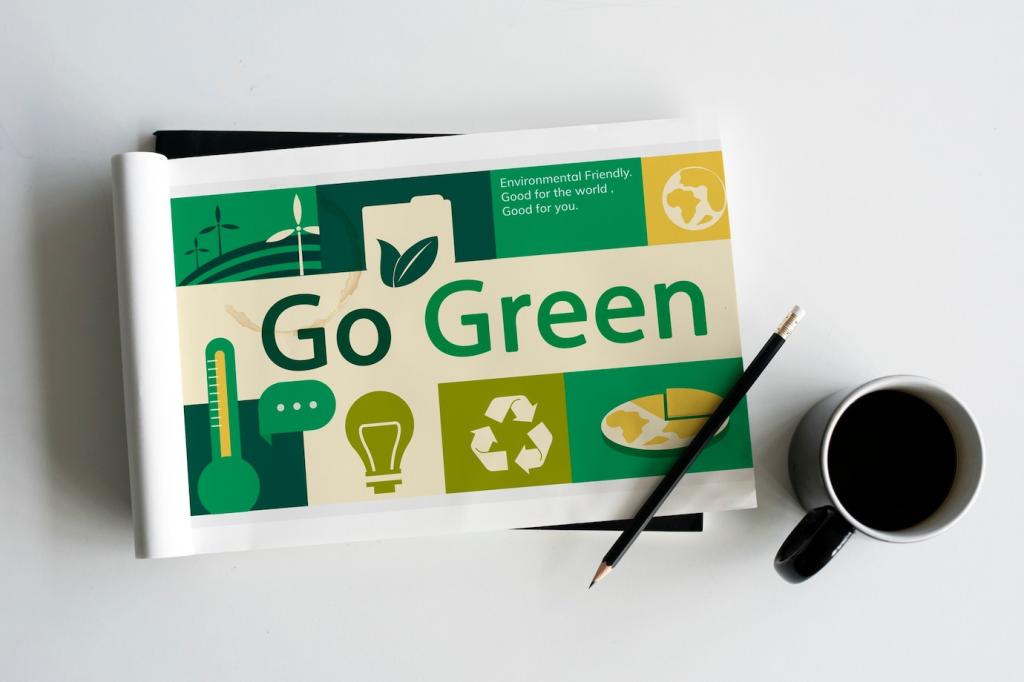
Writing for Circular Economy Brands: Words That Close the Loop
Chosen theme: Writing for Circular Economy Brands. Welcome to a space where language reduces waste, nurtures longevity, and inspires repair, reuse, and regeneration. Join our community, share your examples, and subscribe for field-tested prompts that turn circular principles into powerful, human storytelling.
Finding a Voice That Mirrors Circular Values
Principles-First Messaging
Anchor every line in concrete circular principles—design for repair, materials recapture, and longevity. Replace abstract sustainability claims with practical invitations: return, refill, mend, repeat. Ask readers to share which principle guides their next campaign.
From Waste to Resource Narrative
Reframe discards as beginnings. Show how a chipped mug becomes a mosaic, or a worn jacket earns another season through expert stitching. Invite your audience to post their favorite upcycling stories and tag your brand’s handle.
Empathy Mapping Across the Loop
Map feelings from purchase to repair to return: pride, confusion, relief, delight. Write copy that anticipates each emotion with timely reassurance. Ask followers which stage confuses customers most, and we will draft microcopy together.


Lifecycle Storytelling: Origin, Use, Return, Rebirth
Describe the fiber’s first life, the sorting yard’s rhythm, and the mill’s careful process. Keep it specific, naming regions and certifications where applicable. Ask readers which details build trust without overwhelming newcomers.
Lifecycle Storytelling: Origin, Use, Return, Rebirth
Write maintenance copy like a supportive mentor: seasonal care lists, stain triage checklists, and friendly push notifications. Encourage readers to save a garment care post today, then share their best tip with the community.
Proof Over Promises: Data, Transparency, and Trust
Prioritize take-back rate, repair adoption, material recapture, and average product lifespan over vague footprint claims. Define baselines and timeframes. Ask readers which metric changed their internal decision-making most, and why it stuck.
Proof Over Promises: Data, Transparency, and Trust
Use simple charts, annotated photos, and before-and-after weight tallies. Pair every graphic with one human sentence: what this means for everyday life. Invite readers to share an impact chart they understood instantly.


UX Writing for Refill, Repair, and Return
Refill and Return Flows
Replace jargon with friendly action: Scan code. Print label. Drop box. Celebrate every completed step with progress feedback. Ask readers which microcopy reduced abandonment in their flows and how they measured success.
Repair Instructions that Empower
Write repairs like recipes: tools, time, steps, pause points, and photos. Include a decision tree for when to DIY versus send-in. Encourage readers to share a repair story that turned frustration into pride.
Packaging and QR Touchpoints
Teach the package to speak. Print minimal care icons, loop prompts, and a QR that opens to hyperlocal return options. Invite readers to scan a favorite package today and critique its circular guidance.

UGC that Honors Craft and Care
Curate before-and-after repairs, toolkits, and workshop shelves. Credit contributors by name and neighborhood. Ask readers to post a single photo of a treasured fix and describe the moment they decided to repair.

Challenges with Purpose, Not Pressure
Design a thirty-day mend-and-share calendar with tiny wins: sew a button, sharpen a blade, clean a filter. Invite sign-ups, then celebrate every check-in. Encourage replies with challenge ideas that feel genuinely doable.



B2B Narratives: Procurement, Operations, and ROI
The Operational ROI Story
Frame repair and recapture as uptime, inventory resilience, and reduced disposal fees. Tie benefits to service-level agreements. Ask readers which operational metric finally opened budget doors for their circular pilot.
Case Studies that Show Loops Closing
Structure stories with baseline, intervention, and verified outcome. Include photos of bins, stations, and staff. Invite the audience to share one before-and-after detail that persuaded a skeptical stakeholder to proceed.
Winning RFP Language
Mirror procurement criteria: compliance, reporting cadence, traceability, and training. Offer sample KPIs and escalation paths. Encourage readers to paste a redlined paragraph they struggle with, and we will suggest alternatives.
Crisis Readiness and Greenwashing Risk
Acknowledge gaps without defensiveness. Share what is in scope now, what is next, and what requires partnerships. Ask readers to recount a time honesty improved a conversation that started with skepticism.


Crisis Readiness and Greenwashing Risk
Contrast benefits and costs: durable materials versus heavier shipping, recycled content versus availability constraints. Use side-by-side language, not absolutes. Invite the community to propose phrasing that made a hard truth understandable.
